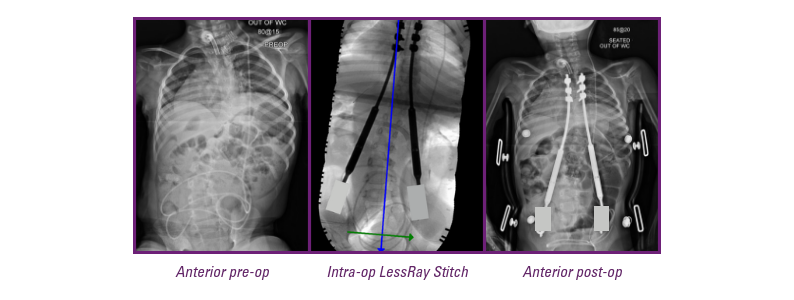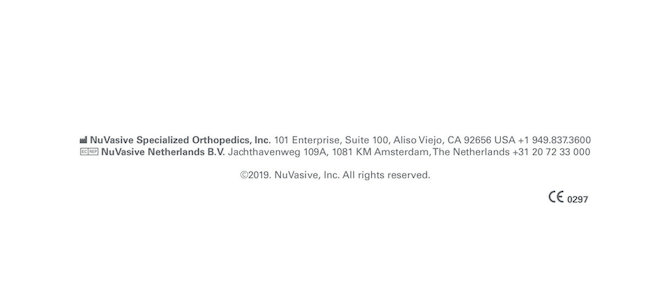![]()
In our Featured Case series, NuVasive® will showcase innovative cases and how our unique technology is integrated to create a cohesive system to address key patient pathologies. Our mission at NuVasive is to change patient lives and we are constantly focused on how to deliver improved patient outcomes, increase OR safety and efficiency, and extend our technology to future applications.
In this Featured Case, we present a skeletally immature, seven-year-old pediatric patient with early onset neuromuscular scoliosis, secondary to myelomeningocele (spina bifida). The patient presented with a progressive 60-degree right thoracic curve and 53-degree left lumbar curve which had failed to respond to non-operative measures. Furthermore, she had 60-degrees of global kyphosis. Due to the progressive nature of her early onset scoliosis (EOS), the magnitude of her curves, and her young age, the utilization of MAGEC rods was recommended.

“I’m very happy with the results. The low-dose radiation afforded by a technology like LessRay is perfect for the kids we treat,” shares Dr. Guillaume.
The procedure was carried out using components of the RELINE® Small Stature system and two 5.0 mm MAGEC X standard rods with 90 mm actuators. In order to minimize the patient and the OR staff’s exposure to radiation, they took advantage of LessRay technology. Dr. Guillaume took 11 standard fluoro shots (0.77 mGy) prior to saving the LessRay baselines that gave them the ability to utilize low-dose and low-pulse settings on the C-arm throughout the rest of the case. Fifty-four low dose images were taken (0.71 mGy) for a total of 1.48 mGy, whereas one O-arm spin equates to about 15 mGy.
“The benefit of tracking for your C-arm, plus fluoro with profoundly decreased radiation exposure relative to one O-arm spin is huge. All LessRay images are taken in real time, and not having to worry about frame shift is a dramatic advantage,” says Dr. Guillaume.
The patient is now six weeks out from surgery and Dr. Guillaume reports that she’s doing incredibly well. Both the patient and her family are very happy with the results following her procedure.
Click here to read more featured cases.

